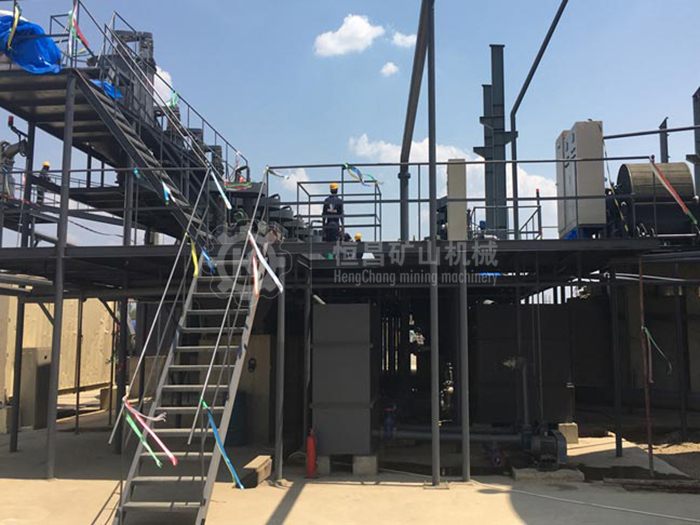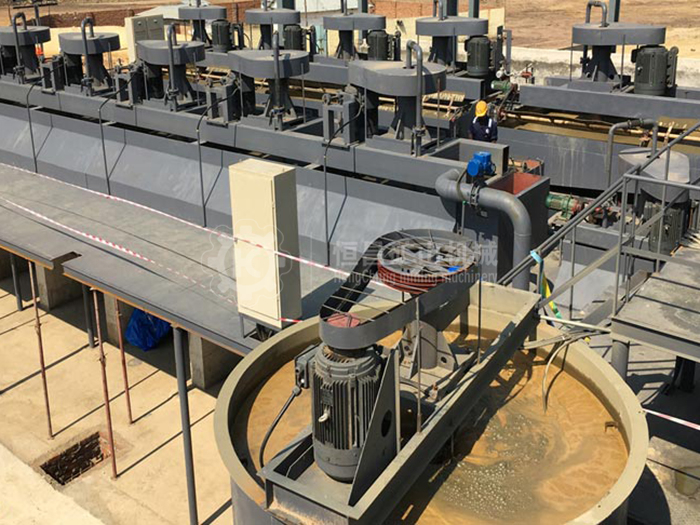Reasons of flotation machine impeller wear and improvement methods
2020-09-23 17:22:26

A. Reasons of flotation machine impeller wear
1. Erosion and wear
The solid particles mixed in the slurry impact the flow surface, causing the surface of the material to be elastically deformed and plastically deformed successively. After repeated impact of the solid particles, the material is fatigued and damaged and the surface material falls off. There are concentrated scratches and pits along the flow direction when the abrasion is slight; when the abrasion is severe, the surface is corrugated or grooved, and when the abrasion is severe, the parts may perforate and fall into pieces.
2. Combined effect of cavitation wear and erosion wear
When the impeller rotates to remove the pulp, air pressure will be formed and bubbles will be generated. There are three main ways to generate bubbles: the impeller rotates to discharge the slurry to form fish pressure, and air is inhaled to form bubbles; the air dissolved in the slurry in the negative pressure zone precipitates to form bubbles. After the bubble is formed, it moves with the slurry, and the bubble that touches the inner wall of the impeller collapses due to the increase in pressure, thus forming a microjet toward the wall. This microjet completes the directional impact on the surface of the material in a very short time, and the force generated is equivalent to the effect of “water hammer”.
The metal surface is gradually fatigued and peeled due to impact, causing material loss. The solid particles in the slurry are driven by cavitation and impact the metal surface. This damage includes both the impact of micro jets and the impact of solid particles, which is the combined effect of cavitation wear and impact wear.
B. Improvement of flotation machine impeller wear
1. Change the exit angle of the blade
Considering wear, the thickness of the inlet edge of the blade is generally larger. For flotation feed material, which is more abrasive media, the use of a smaller blade exit angle can minimize the impact of particles on the blade working surface. The blade exit angle is generally 30°-40°.
2. Adjust the width of the blade outlet
In order to reduce wear and tear, increase the width of the blade outlet, which reduces the relative velocity at the impeller outlet and reduces impeller wear on the one hand, and on the other hand reduces the jet-wake effect at the impeller outlet, so that the outlet slurry velocity distribution is uniform .
3. Reduce the number of blades
The number of blades of the flotation machine is generally 4~7. A smaller number of blades can reduce congestion at the impeller inlet, thereby reducing pump wear.
4. Control solid particle size and hardness
The size and hardness of solid particles in the slurry are important factors that affect the wear behavior of impeller materials. The increase in particle size and hardness will cause the erosion particle size to rise continuously. Therefore, in the daily working process of the flotation machine, the particle size of the flotation material should be strictly controlled to avoid “roughing” to achieve the purpose of reducing the wear of the impeller of the flotation machine.
